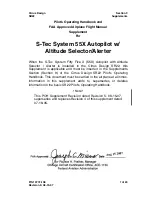
To predict the miscibility of two liquids, subtract the smaller M-number value from the larger M-
number value.
• If the difference between two M-numbers is 15 or less, the two liquids are miscible, in all
proportions, at 15 °C.
• A difference of 16 indicates a critical solution temperature from 25 to 75 °C, with 50 °C as the
optimal temperature.
• If the difference is 17 or greater, the liquids are immiscible, or their critical solution
temperature is above 75 °C.
Some solvents prove immiscible with solvents at both ends of the lipophilicity scale. These
solvents receive a dual M-number:
• The first number, always lower than 16, indicates the degree of miscibility with highly lipophilic
solvents.
• The second number applies to the opposite end of the scale. A large difference between
these two numbers indicates a limited range of miscibility.
For example, some fluorocarbons are immiscible with all the standard solvents and have M-
numbers of 0 and 32. Two liquids with dual M-numbers are usually miscible with each other.
A liquid is classified in the M-number system by testing for miscibility with a sequence of standard
solvents. A correction term of 15 units is then either added or subtracted from the cutoff point for
miscibility.
B.14.2 Solvent stabilizers
Certain solvents degrade, or become unstable, over time. Highly unstable solvents represent a
potential explosion hazard. Solvent stabilizers are added to slow or stop solvent degradation.
Do not leave solvents containing stabilizers, like THF with butylated hydroxytoluene (BHT), to dry
in the system’s flow path. A dry flow path, including the detector flow cell, becomes contaminated
with residual stabilizer, and a substantial cleaning effort is needed to restore the flow path to its
initial condition.
B.14.3 Solvent viscosity
Generally, viscosity is not a consideration when you use a single solvent or under low pressure.
In gradient chromatography, however, the viscosity changes that occur as the solvents are mixed
in varying proportion can effect pressure changes during the run.
If you do not know the extent to which pressure changes affect the analysis, monitor the pressure
during the run.
August 8, 2016, 715005049 Rev. C
Page 95
















































